“ It dawned on me last night..that what was [really] called for was initiative. Auf den Fuhrer zuarbeiten. Working toward the Fuhrer. It’s the watchword of the age…Who’s to say the [arrested man] isn’t guilty? A little time with us, and I’m sure he will confess.”—Detective Franz Teuben
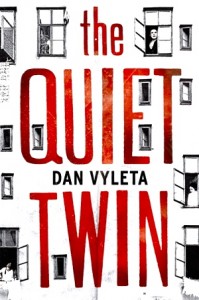 Dan Vyleta’s The Quiet Twin offers a unique perspective on the growing menace of National Socialism in Vienna, in 1939. Using an ordinary apartment complex and the events which affect the seemingly ordinary characters who inhabit it as a microcosm for the terrifying realities which are about to come, Vyleta creates an almost unparalleled atmosphere of fear and dread. An absorbing literary novel, which never loses its way as it progresses, it is ultimately a horror novel which out-horrors almost all others, not only because of the awful events which unfold, but because the unfolding action feels so casual and so domestic in the context of the residents’ lives. And that is the whole point. Throughout the action, each character decides in a moment of crisis, that “just this once” s/he will ignore the promises made to others and the values which have always been paramount in civilized society in favor of what works best for himself/herself at that moment. The result is a societal compromise of epic proportions, one which allows the Nazi menace to take hold. The word “Holocaust” never appears, though the psychological horror, political horror, sociological horror, and moral horror come to life in new ways as the action in this apartment house unfolds.
Dan Vyleta’s The Quiet Twin offers a unique perspective on the growing menace of National Socialism in Vienna, in 1939. Using an ordinary apartment complex and the events which affect the seemingly ordinary characters who inhabit it as a microcosm for the terrifying realities which are about to come, Vyleta creates an almost unparalleled atmosphere of fear and dread. An absorbing literary novel, which never loses its way as it progresses, it is ultimately a horror novel which out-horrors almost all others, not only because of the awful events which unfold, but because the unfolding action feels so casual and so domestic in the context of the residents’ lives. And that is the whole point. Throughout the action, each character decides in a moment of crisis, that “just this once” s/he will ignore the promises made to others and the values which have always been paramount in civilized society in favor of what works best for himself/herself at that moment. The result is a societal compromise of epic proportions, one which allows the Nazi menace to take hold. The word “Holocaust” never appears, though the psychological horror, political horror, sociological horror, and moral horror come to life in new ways as the action in this apartment house unfolds.
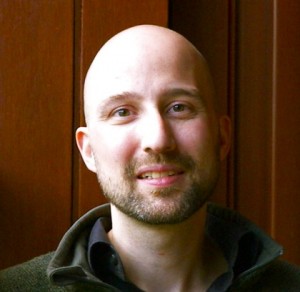
The murder and disembowelment of Prof. Speckstein’s old and much-loved dog is but the first event in a series of murders, perhaps by a serial killer, affecting the entire apartment complex. None of these, according to Zuzka, the niece of the Professor, have ever been reported in the newspapers. Zuzka, who is a hypochondriac, has persuaded her housekeeper to contact Dr. Anton Beer, another resident of the building, and bring him to see her for her health issues. Dr. Beer quickly discovers that Zuzka is more interested in her romantic health than in her physical health. When he arrives there at night, however, Zuzka takes him to the window of her room and has him look out at the courtyard behind them. There, he can see the private lives of many of the residents through their windows: Otto Frei, a young mime who practices at 3:00 a.m., the foot of a possibly imprisoned woman visible through his window; Anneliese, a hunchback, the ten-year-old daughter of an abusive drunk, with whom Zuzka “talks” in sign language; an amputee survivor of the Great War, who rarely leaves his apartment; an English teacher with an active “social life”; and an Asian musician who plays the trumpet.
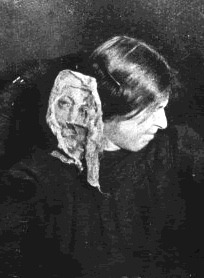
Gradually, the reader learns about the private lives of the other major characters, including Dr. Beer, newly single, with a wife who has left him; Zuzka’s uncle, Prof. Speckstein, who is now working as a Zellenwart, a public spy for the Nazi party, having been tried and convicted of the rape of a young girl; Zuzka herself, the twin sister of Dasa, who died a decade ago; and ultimately, the sadistic Detective Teuben, working for the Party, who has decided that he must have the invalid twin sister of the mime, Otto Frei, as his lover.
As new and grisly murders unfold, the tension escalates. Various characters are thought to have been responsible for the murders and/or the disposal of bodies, and some even confess to them through their imaginations. It is here that Vyleta really shows his creativity. At the beginning of each section of the novel, he tells a brief (italicized) story about a real, famous person from the past, revealing parallels to the sociopolitical atmosphere in Vienna in 1939. Peter Kurten, at age nine watched his uncle slaughtering dogs, and then went on to become a serial killer himself in the late 1890s. Carl Grossman, another serial killer, developed a unique way to dispose of the bodies of his victims. Fritz Haarmann became a police informer before his arrest and later execution for serial murder. 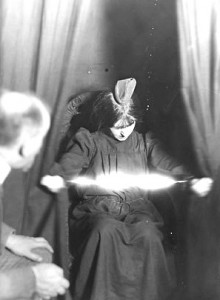 Psychiatrist Albert von Shrenck-Notzing studied paranormal phenomena in the late nineteenth century, especially the ability of people like “Eva C.,” who could create ectoplasmic materializations. Significantly, Schrenck-Notzing was also a researcher into the phenomenon of “suggestion-induced falsification of memory.” Herbert Gerdes created the 1936 film “Erbkrank: the Hereditary Defective,” filmed inside a German mental institution and shown in all five thousand German and Austrian theatres as justification for the extermination of the patients. All these direct parallels between past and present make the action especially vivid and horrifying.
Psychiatrist Albert von Shrenck-Notzing studied paranormal phenomena in the late nineteenth century, especially the ability of people like “Eva C.,” who could create ectoplasmic materializations. Significantly, Schrenck-Notzing was also a researcher into the phenomenon of “suggestion-induced falsification of memory.” Herbert Gerdes created the 1936 film “Erbkrank: the Hereditary Defective,” filmed inside a German mental institution and shown in all five thousand German and Austrian theatres as justification for the extermination of the patients. All these direct parallels between past and present make the action especially vivid and horrifying.
The action comes to a head when Prof. Speckstein, the informer, is “persuaded” by his superiors to have a party in his apartment. A murder takes place, but no one reports it. Some residents are blackmailed, and the ominous future plans for still other characters, with whom the reader is sympathetic, become clear. Though Otto Frei and his sister are twins, and Zuzka and her sister Dasa are twins, the real “twins” of this nove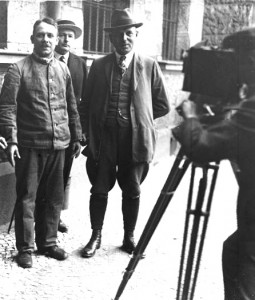 l’s title are all the individual characters who have “quiet twins” – completely different selves in private from what is known in public to everyone else, including sometimes the reader. As Vyleta continues his characters’ lives through to the conclusion, their private lives become more understandable, and more pathetic. Ultimately, the lack of real communal values, combined with fear, leads to opportunistic decisions which affect all the other characters in the novel.
l’s title are all the individual characters who have “quiet twins” – completely different selves in private from what is known in public to everyone else, including sometimes the reader. As Vyleta continues his characters’ lives through to the conclusion, their private lives become more understandable, and more pathetic. Ultimately, the lack of real communal values, combined with fear, leads to opportunistic decisions which affect all the other characters in the novel.
Occasionally some characters re-enact events they have imagined or actions they have heard about but may not have committed, creating some confusions about the “real” murderers, but the novel is a powerful exploration of how vulnerable unthinking people can be in the hands of manipulators. Ironically, each person’s own “quiet twin” enables him/her to survive within this fraught environment, even at the expense of neighbors and friends. Thoughtful, beautifully constructed, historically astute, and absolutely riveting to read, this is one of the best books I have read on the events leading to the Holocaust.
ALSO by Vyleta: THE CROOKED MAID
Photos, in order: The author’s photo is from http://www.lancette-arts-journal.ca
Eva C., a real character about whom there are many mysteries in this novel, is shown here with an ectoplasmic materialization on her shoulder in a photo by psychiatrist Albert von Schrenck-Notzing. http://en.wikipedia.org
The same medium, Eva C. is shown with a “light manifestation” (and a materialization on her head) in another photo by Dr. von Shrenck-Notzing: http://en.wikipedia.org/wiki/File:Medium-Eva-Carriere-1912.jpg
The final photo shows serial murderer Fritz Haarmann, far left, in 1924: http://en.wikipedia.org
